‘A catastrophe’: Why world’s largest inland water body could disappear and what it says about climate change
The Caspian Sea's water level is declining dramatically, prompting urgent calls for regional cooperation. CNA explores an environmental crisis fuelled by climate change and industrial activity in the first part of a series on the upcoming COP29 climate talks in Baku.

The sun sets at Buzovna beach on the outskirts of Baku. (Photo: CNA/Jack Board)
BAKU, Azerbaijan: On a summer weekend afternoon, a keen crowd of sunchasers descend on Buzovna beach, not far from Baku on the Absheron Peninsula.
Children splash in the shallows and couples stroll along the thick taupe-coloured sand. Plastic seats and tables inside simple shaded gazebos and ice-cream branded umbrellas dot the shoreline.
The beach is a vast expanse. A roped-off car parking area is hundreds of metres from the water, so far from the water’s edge that some simply drive their vehicles onto the beach. But it was not always like this.
Just a few years ago, the gulf between the beach’s modest infrastructure and the gently lapping waves was far smaller.
The Caspian Sea, the world’s largest inland body of water, is shrinking in dramatic fashion.
The sea has also been referred to as a lake, though there has been some contention by countries over its status for rights over shipping and resources.
It covers 390,000 square kilometres, making it similar in size to Japan. Yet while much of the globe is contending with the severe challenges of rising sea levels and coastal regions being inundated by the ocean, the opposite phenomenon is true for the Caspian.

Water is receding at a devastating rate. From already critical lows, Caspian levels in 2022 were recorded to be dropping by 6cm to 7cm per year. Since 1995, its levels in Azerbaijan have dropped some 1.7m. The falling water levels are having critical consequences on local biodiversity and livelihoods.
In contrast, global sea levels have been steadily rising over the past three decades, with an average increase of around 3mm per year.
The major causes of the Caspian’s decline are increased evaporation due to higher temperatures, as well as decreased rainfall and reduced discharges from inflowing rivers, the most major of which is the Volga river in Russia. All of these factors are exacerbated by climate change.
“The Caspian Sea is the indication of what is wrong with the climate at a global level,” Mr Elnur Soltanov, the CEO of COP29 and deputy energy minister of Azerbaijan, told CNA.
From the beaches around Baku, to the long shorelines playing host to a vast arsenal of oil and gas infrastructure, to national marine protected areas close to the border with Iran, the situation is similar across coastal Azerbaijan.
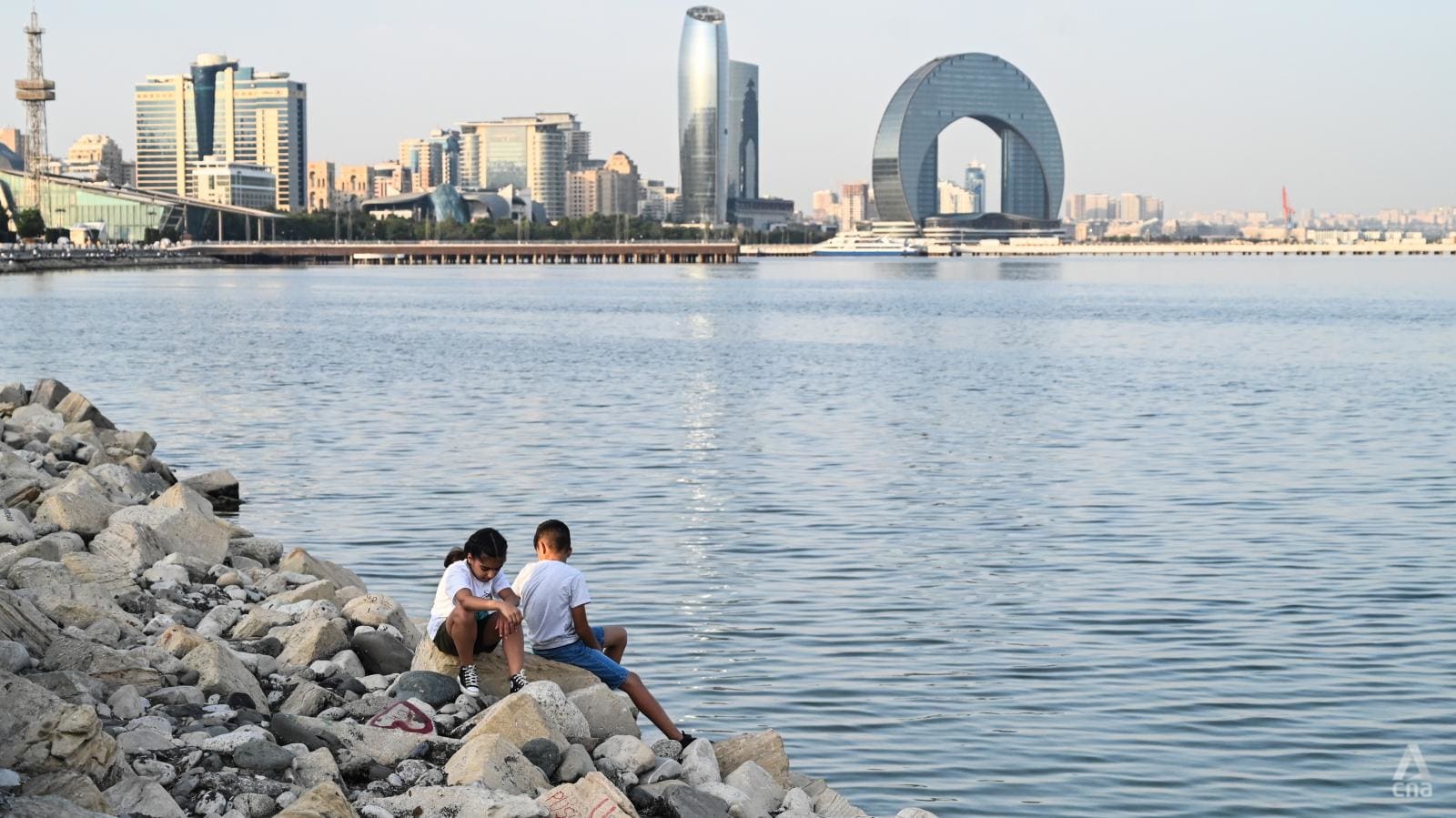
Zoom out even further and the Caspian Sea is central to a regional ecological crisis, enmeshing the five countries that border it and rely on it for energy, food, trade and biodiversity balance.
“The world is losing one of its most valuable and largest enclosed water bodies,” said Mr Rovshan Abbasov, a hydrologist and expert in integrated water resources management in Baku.
“The Caspian Sea once provided more than 90 per cent of the world's caviar and sturgeon resources. Today, that's no longer the case. In terms of resources, and also in terms of intrinsic values, the world is losing an important ecosystem,” he said.
One estimate, published in nature journal Communications Earth & Environment in 2020, predicts the Caspian’s levels could drop by between 9m and 18m by the end of the century. In some areas, that means the waterline disappearing from view, kilometres from where it used to be.
“As Azerbaijan, and as coastal states, we must definitely take this decrease into account because this decrease will continue. We must definitely prepare for adaptation,” Mr Abbasov said.

In parts of Kazakhstan and Russia, where the sea is naturally shallower anyway, entire bays have dried up as the sea has drawn back between 30km and 50km.
The receding waters have unveiled treasures and scars of the past. A sunken ship revealed itself by the bay around downtown Baku earlier this year. While it attracted the interest of passersby and tourists alike, authorities soon had it removed.
What cannot be hidden around the same area are the new patches of land - mini islands of sorts - emerging from the depths as water levels drop, year on year.
The Caspian’s levels have fluctuated historically. History shows that water has risen and fallen over generations, sometimes dramatically.
Folklore talks of Baku’s iconic Maiden Tower once being surrounded by water; it is now some 200m from the shoreline. Conversely, in the late 1970s, water levels were recorded lower than they are today.
But this time, there are deep fears that damaging human activity is driving the sea down in a manner that might be irreversible.
“It has become a catastrophe,” said Mr Islam Mustafayev, the chairman of the Rüzgar Ecological Public Union, an Azerbaijan-based non-governmental organisation focusing on environmental protection.
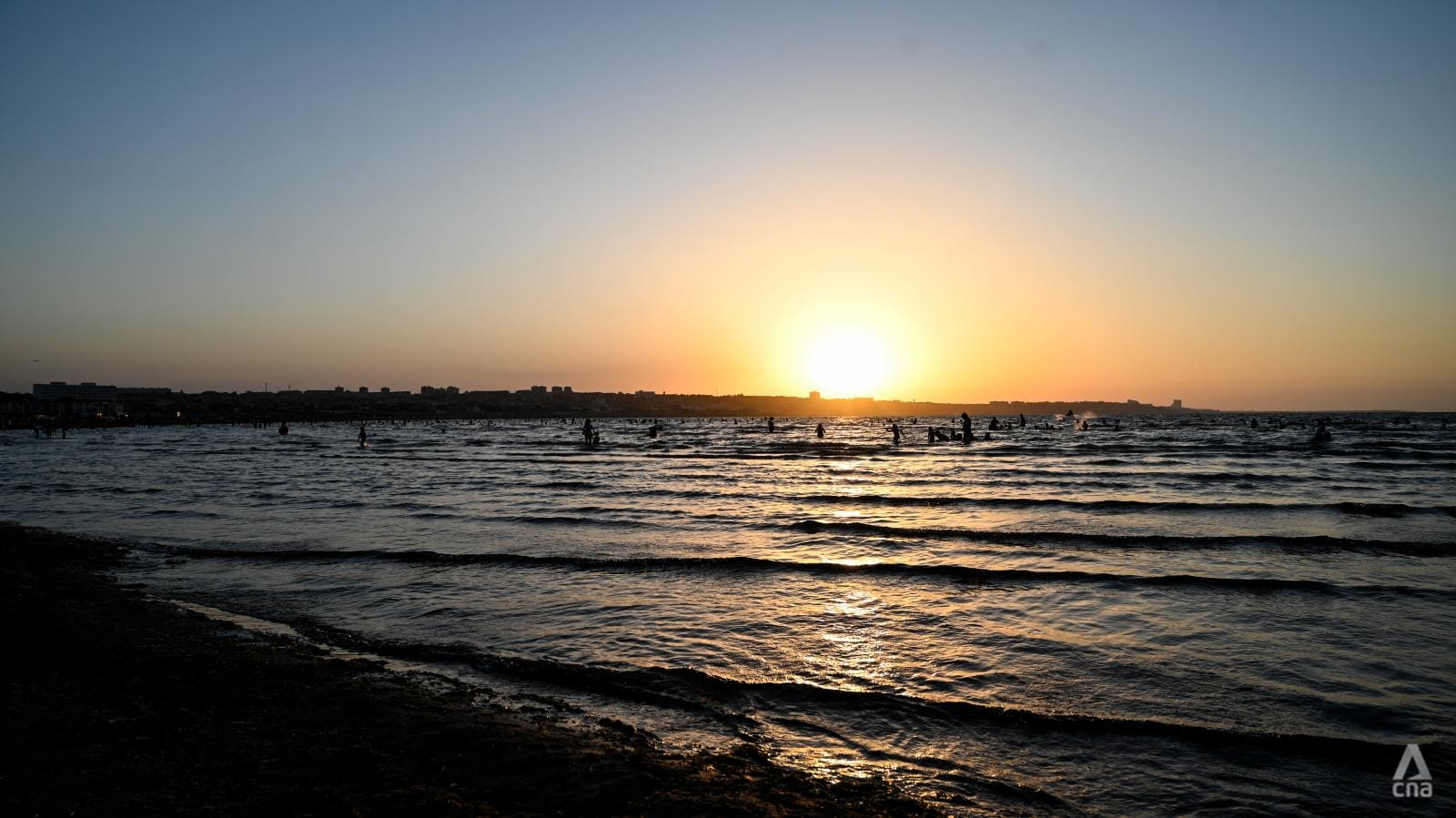
COLLECTIVE NEGLECT
The Caspian is pivotal to the relations between Russia, Iran, Kazakhstan, Turkmenistan and Azerbaijan.
It is a shared resource that has powered economies as a major hub for oil and gas exploration. But it has also acted as a dumping ground for oil, pesticides, chemicals, heavy metals and other bacteriological pollution.
Experts say years of collective environmental neglect and vested political and industrial interests have contributed to the Caspian’s demise.
The geographical quirks of the sea mean its impacts are unique, especially compared to other huge water bodies.
“The Caspian Sea, unlike other seas, is inland. It does not have any outflow. All the surrounding rivers flow into the sea and more than 80 per cent of its water comes through the Volga river,” explained Mr Mustafayev.
“A giant country such as Russia has 45 per cent of its heavy industry along the Volga basin. That’s why all those discharges, pollutants and the waste water of the countries along the Caspian coast flow into the sea,” he said.
A 2022 study published by the Marine Pollution Bulletin found heavy metal contamination was significant in northern parts of the sea, posing a 6 per cent cancer risk for local adults and 18 per cent risk for swimmers experiencing long exposure in the water.
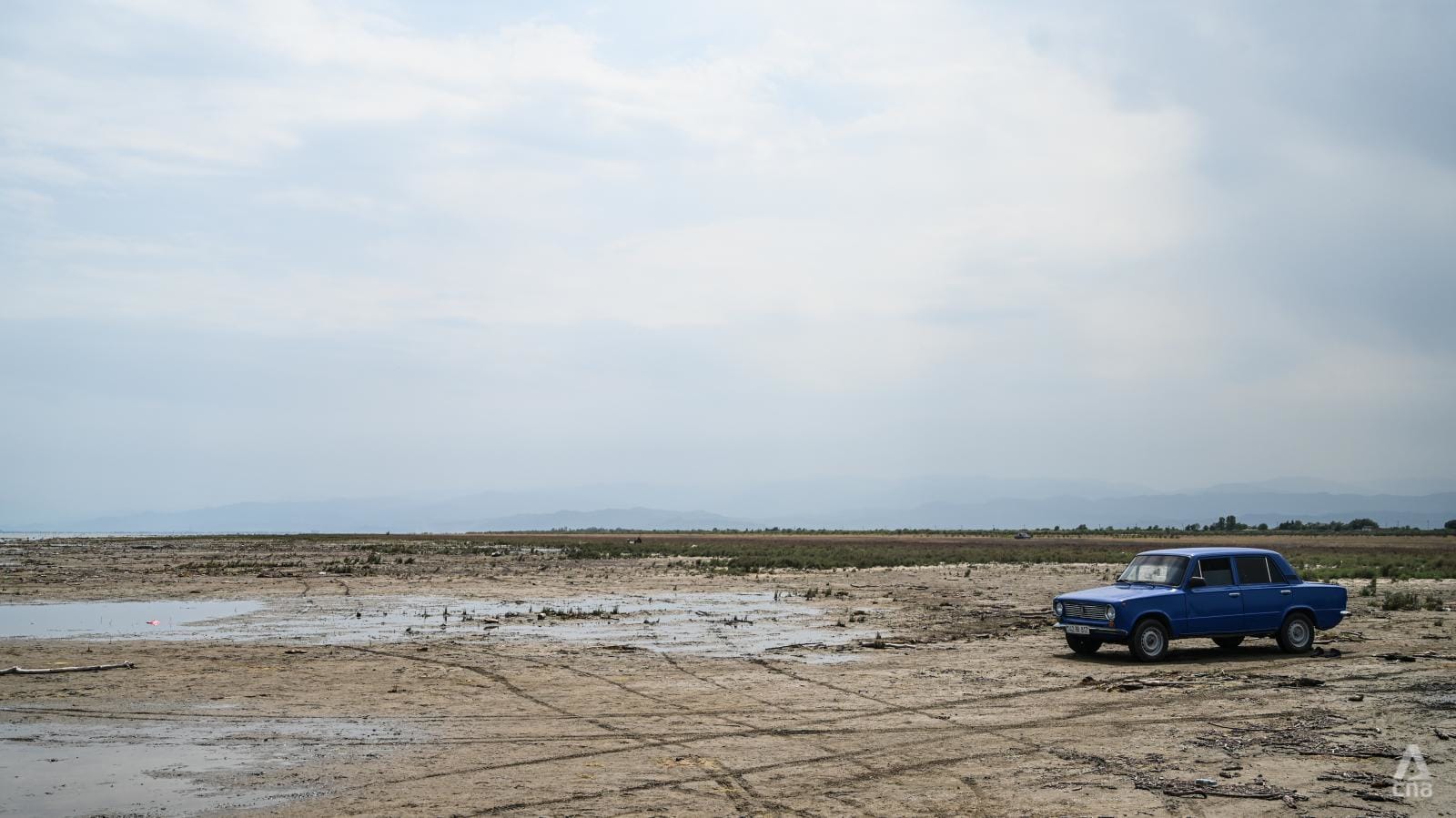
At the same time, the Caspian Basin has experienced a complex interplay of climatic conditions that has resulted in drastic changes to local rainfall, seasonal weather trends and higher temperatures.
Less rain means fewer inflows into the Capsian from surrounding rivers, many of which are increasingly straining to provide water for agriculture. Russia also operates 11 dams along the Volga and its main tributary.
“We naturally link this current decrease to climate change. Population growth also plays a role. Cultivated areas are expanding. In the Kura, Volga and Ural basins there is an increasing need for water,” said Mr Abbasov.
“On the other hand, climate change also reduces the amount of water. Population growth, industrial growth and changes in lifestyle naturally contribute to the decreasing level of the Caspian.”
For the rest of the century, forecasts are for even more extreme rates of evaporation in the Caspian, especially under scenarios where global temperature increase is not reeled in, and to a lesser extent, decreased rainfall.
The potential outcomes in the northern part of the sea include complete desiccation - or extreme dry and prolonged drought.
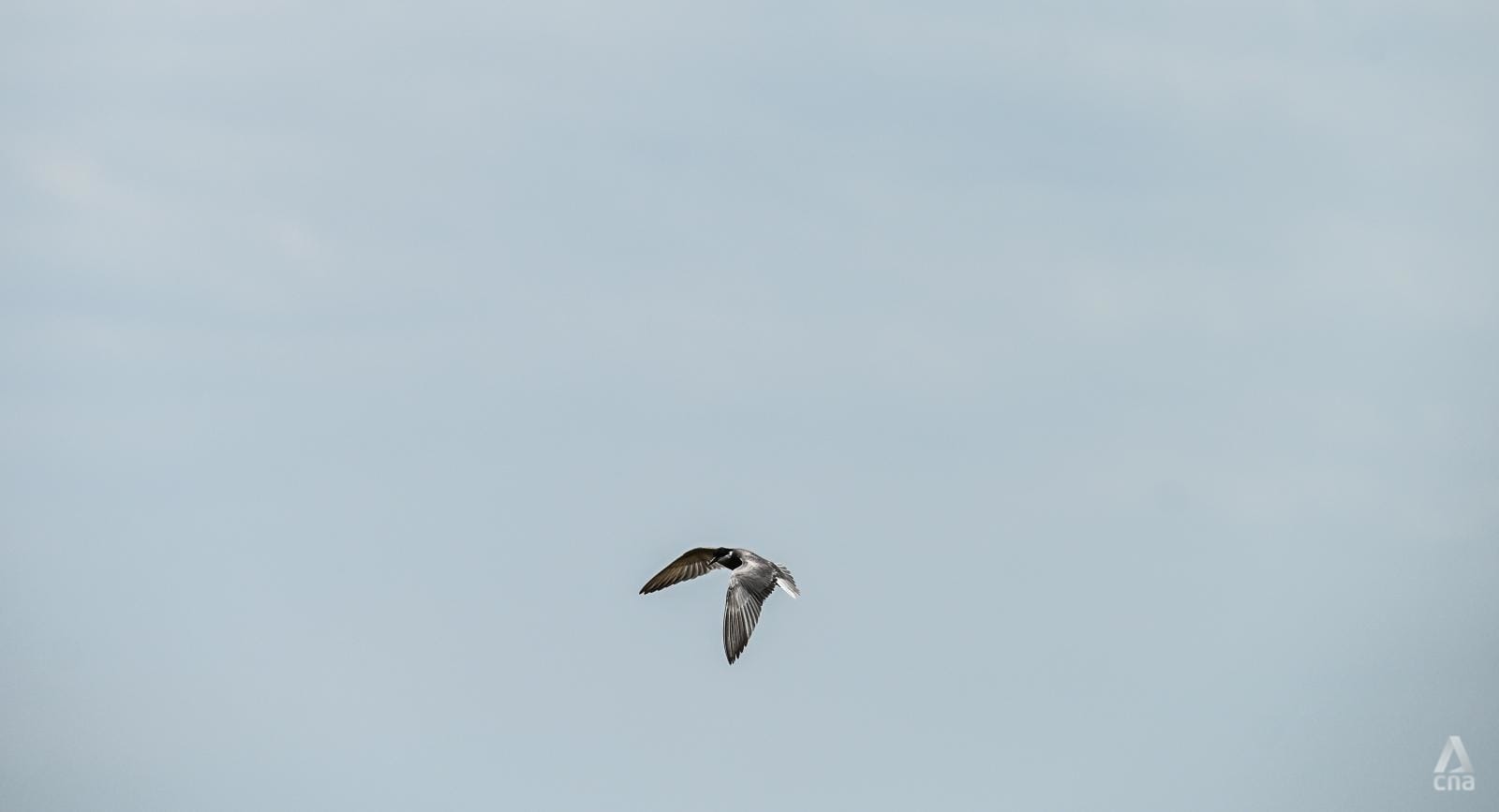
REGIONAL PROBLEMS AND SOLUTIONS
There are regional-wide moves aimed at solving the problem.
In 2018, the Caspian states signed the Convention on the Legal Status of the Caspian Sea, a long-anticipated agreement that set out the territorial boundaries and maritime borders of the countries.
It also laid out provisions for security cooperation, for laying of underwater pipelines and cables and for environmental protection.
It complements the Tehran Convention of 2006, a legal instrument that focuses on environmental aspects of shared concern, such as pollution and biodiversity conservation.
“No one country is to blame, nor is one country responsible, for dealing with environmental pollution in the Caspian Sea. In fact, it is the collective and shared responsibility of all the five littoral states,” said Mr Vali Kaleji, an expert on Central Asia and Caucasian Studies at the University of Tehran.
“Cooperation in this field can be an important basis for joint cooperation between Caspian coastal countries,” he said.
But there have been multiple obstacles to ensuring legal frameworks are effective tools to prevent the Caspian’s demise.
As an example, Mr Mustafayev explained that because nearby countries such as Georgia and Armenia are not signed up to the Tehran Convention, they are not mandated to limit pollution discharged into their rivers, which eventually empty into the Caspian via Azerbaijan.
The worsening climate and the deteriorating environment should induce the littoral countries to make the Caspian’s survival the centrepiece of improved cooperation, and encourage the entire world to do more to tackle global warming, said Mr Soltanov.
“Unless the international community takes action in terms of the climate crisis, you cannot save the Caspian. (For the) five littoral countries, unless they take actions, one country's actions won't make a difference,” he said.
Azerbaijan has taken the presidency of the Conference of the Parties (COP) and will host crucial global climate change talks this month in Baku.
Mr Soltanov said the plight of the Caspian on a regional level would be one issue Azerbaijan will be “shedding light on within our action agenda” at COP29.
“The climate issue has national, regional and global levels in terms of creating problems. It (also) has national, regional and global levels in terms of solutions,” said Mr Soltanov.
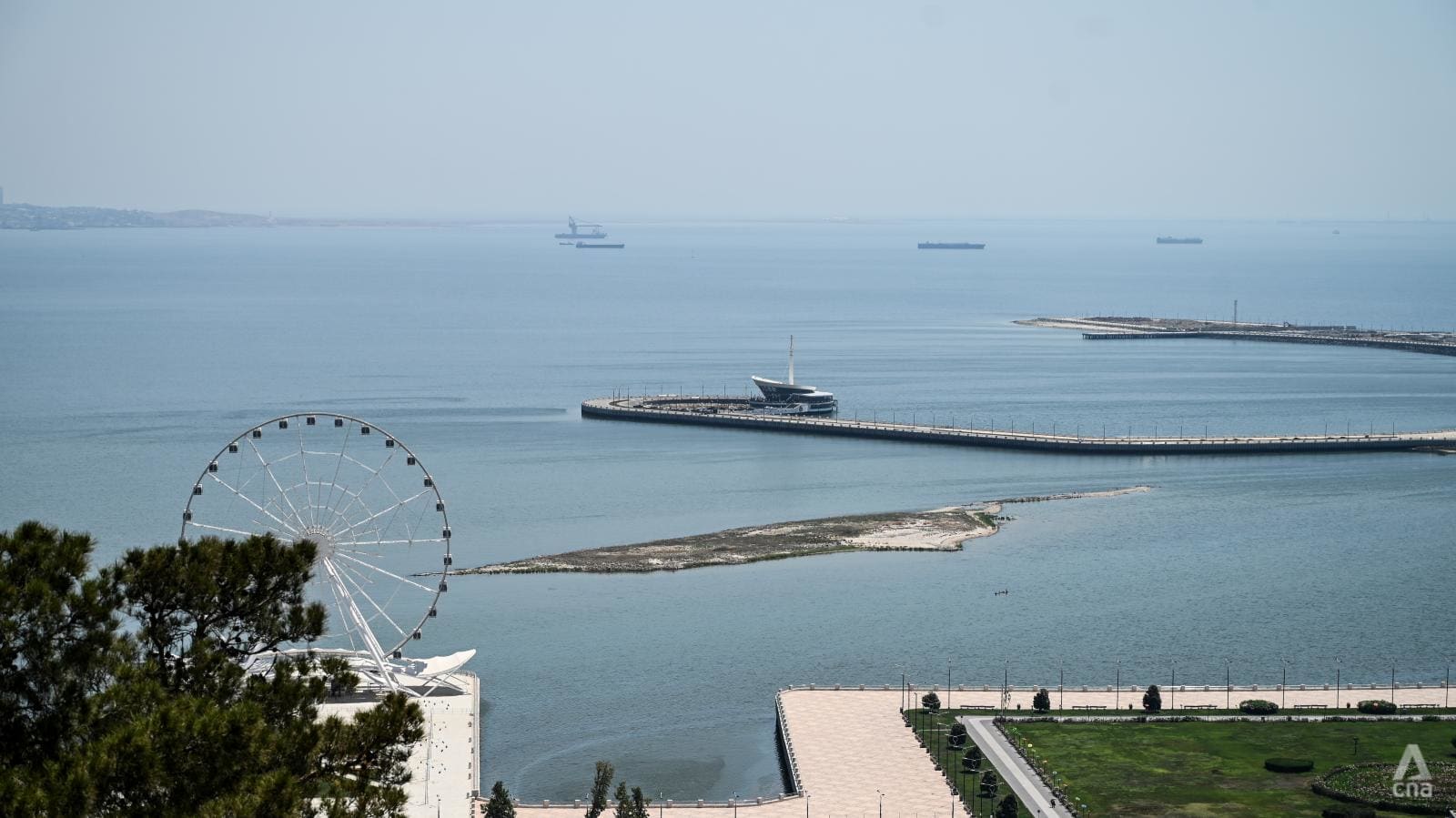
He acknowledged that the country needed to undertake “certain adaptation measures that will have significant consequences”.
“If you ask me what the most important thing is, definitely, it’s water. There are other issues as well, but water really stands out,” he said.
Decreasing water levels can lead to an increase in the concentration of salt on land, leading to degraded soil and underperforming crops.
With the threat of expanded saline-impacted areas where crops cannot be grown and sandstorms from increased desertification, Mr Abbasov said that creating green belts and limiting water use in agriculture would be important strategies going forward.
“If ships have difficulty approaching the shore, we might need to dig channels or extend the ports further into the sea. This could be a second adaptation measure,” he said.
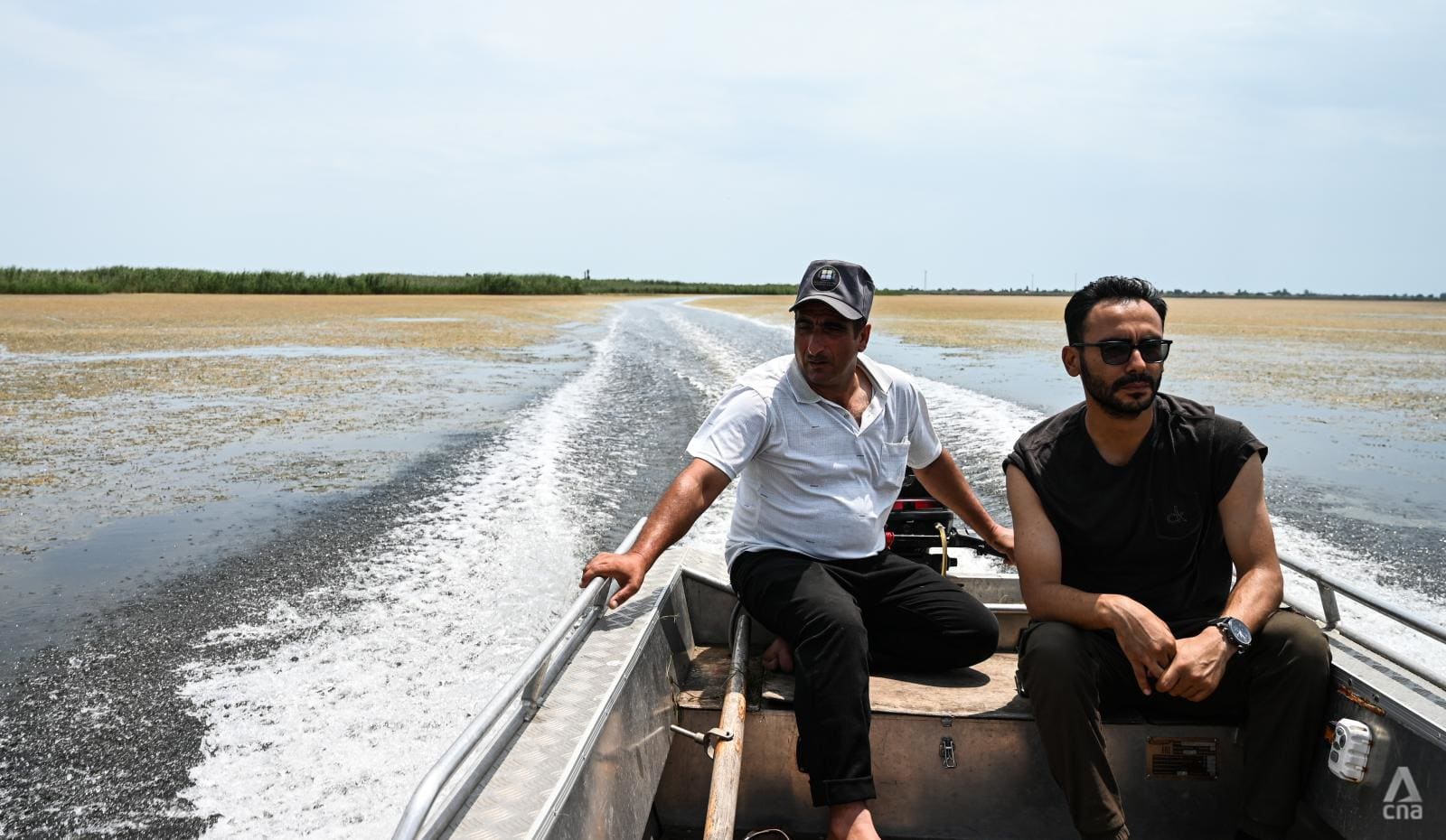
A COASTAL WASTELAND
Away from the leisure locales enjoyed by weekenders, in the deep south of the country, the issue presents itself in a more desolate fashion.
The Caspian here abuts the Gizil-Agach State Reserve, an isolated and precious ecosystem, home to a broad array of flora and fauna. It was established as Azerbaijan’s first marine national park in 2018.
Local efforts in environmental protection and conservation are struggling to contend with broader ecological changes.
The result is significantly declining fish populations and species extinction risk, impacted plant life and a disruption to the arrival and breeding of hundreds of species of birds that seasonally visit the wetland area, according to park guide, Elshad Asgarov.
“Since most of our park consists of water - with 70 per cent being an aquatic area - it’s a significant concern,” he said.
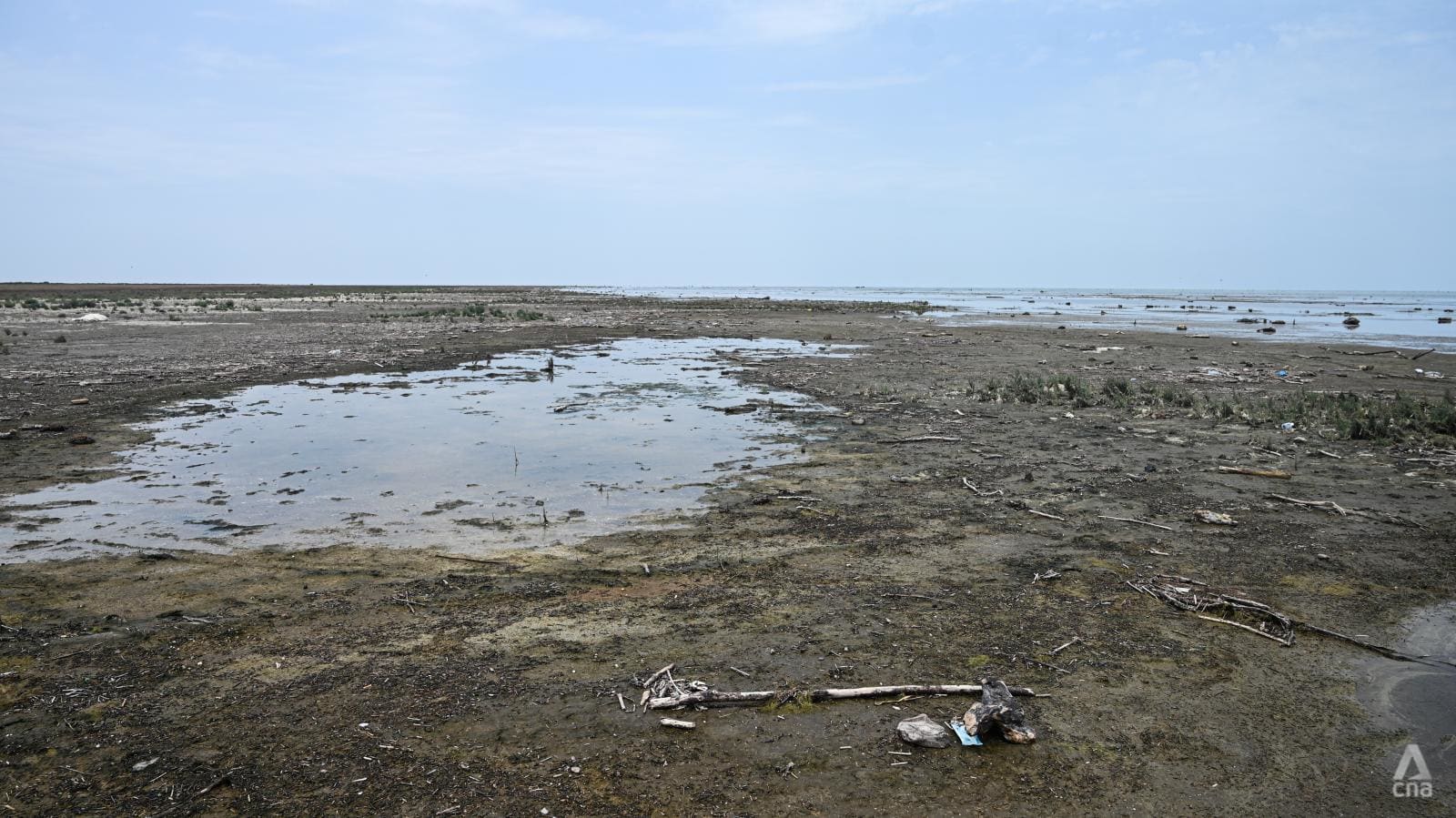
Outside the reserve’s boundaries, the coastal zone resembles a wasteland. Years of debris litter the broad muddy belt that has formed between the water and the main road.
The houses of the local fishing village are now some 3km from the water’s edge, a far cry from the days in the past when the sea was at their doorsteps.
“Naturally, local people are concerned as their livelihoods are affected, since fishing is the primary occupation here. When water levels decrease, they face difficulties accessing the sea and catching fish,” said Mr Asgarov.
Nearby lowland rivers and deltas are also being impacted, with land fertile enough to grow certain crops like watermelon or rice also on the decline.
“The reduction in water levels also leads to increased aridity, which impacts their drinking water supply,” he said.
A lack of fish stretches from north to south in Azerbaijan these days, as attested by those who cast their lines in the sea.
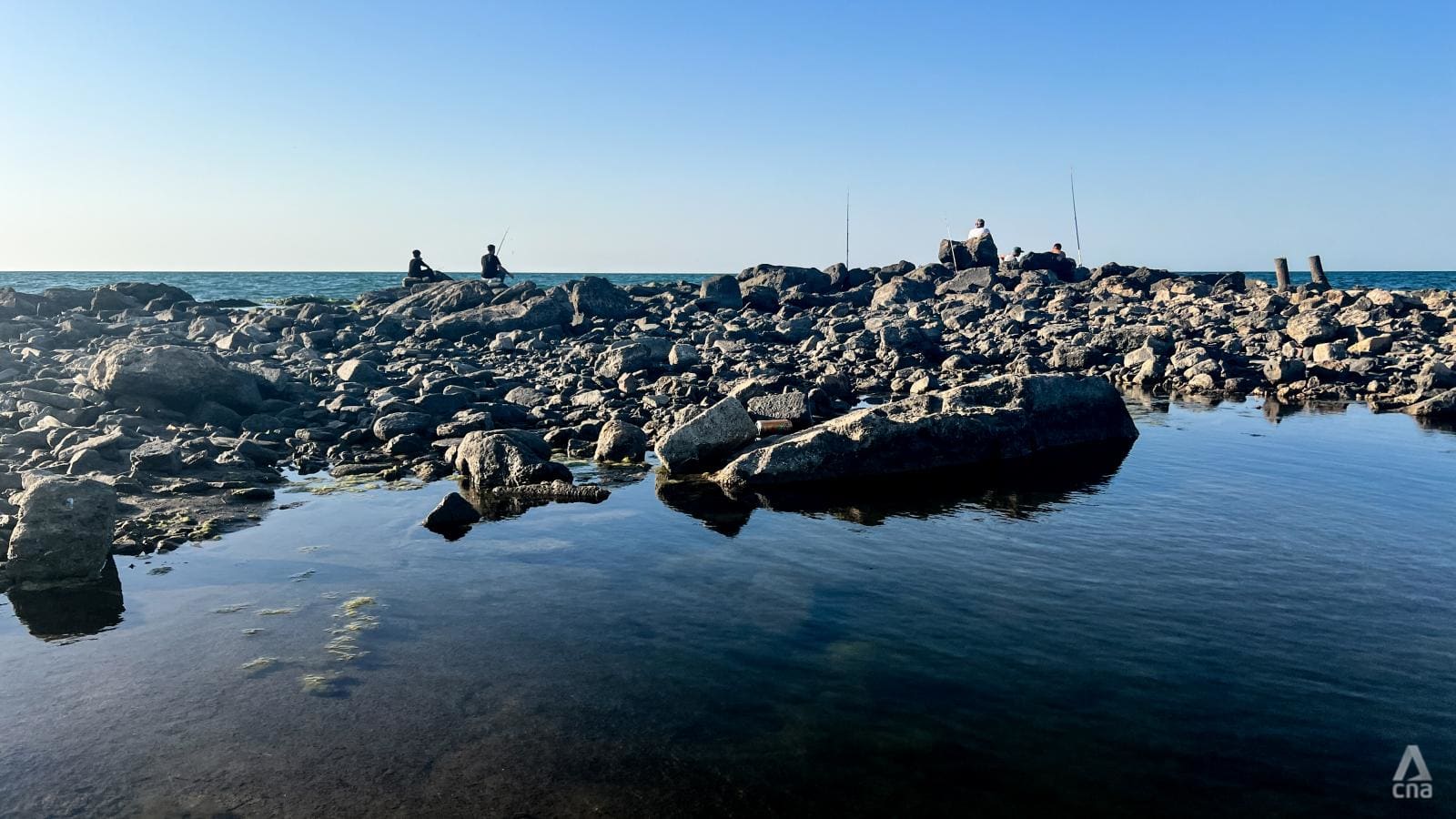
Back at Buzovna beach, the sun starts to set on a sweltering afternoon. A smattering of fishermen, young and old, clamber up to a rocky outcrop facing the sea.
One of them, Mr Nizami Huseynov, says fishing by the beach, which he has done for as long as he can remember, is not like it once was.
“All of these areas were underwater. The rocks were all submerged. The amount of fish has drastically decreased. Even the fish have turned smaller,” he said.
“The sea is drying up little by little. How far will it go? But this is what we have. What can you do?”















